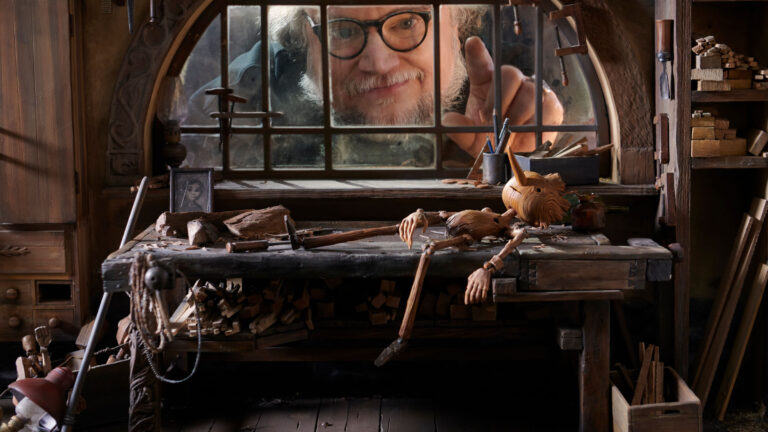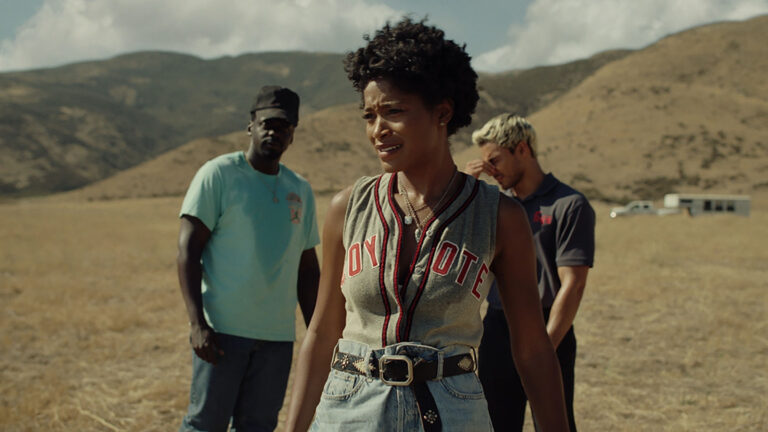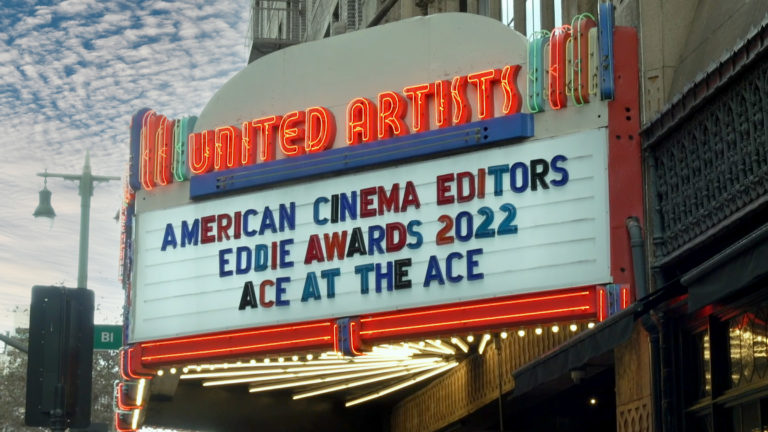People can be eager to compare movies and TV shows to Alfred Hitchcock or the paranoia thrillers (The Conversation, The Parallax View) of the 1970s, but it’s rare those comparisons are earned. Sam Esmail’s Homecoming, about a mysterious health center that claims to help soldiers acclimate to civilian life, is worthy. Esmail made a name for himself as the visionary creator behind another popular television with a mysterious plot, Mr. Robot.
With its unique style – split screens, score, flashback-heavy structure – Homecoming has proven to be one of the best drama series in recent memory. No small feat, given its competition these days.
The series is based on the popular Gimlet Media “radio drama” podcast of the same name, which boasts it’s own star-studded cast including Catherine Keener, Oscar Isaac, and David Schwimmer.

We spoke with the three editors who split duties on the ten episodes: Rosanna Tan, Justin Krohn, and Franklin Peterson. They told us about how they like their cutting rooms set up, the unique way that Sam Esmail likes to work, and why sound was so important to Homecoming.
The technical specs
All ten episodes of Homecoming were shot on the Panavision DXL 2 camera in REDCODE RAW 8K at 6:5 Anamorphic with a 5:1 Compression Ratio. The footage was then edited offline on Mac Pro trashcans, in Avid DNxHD 36 in 1920 x 1080.
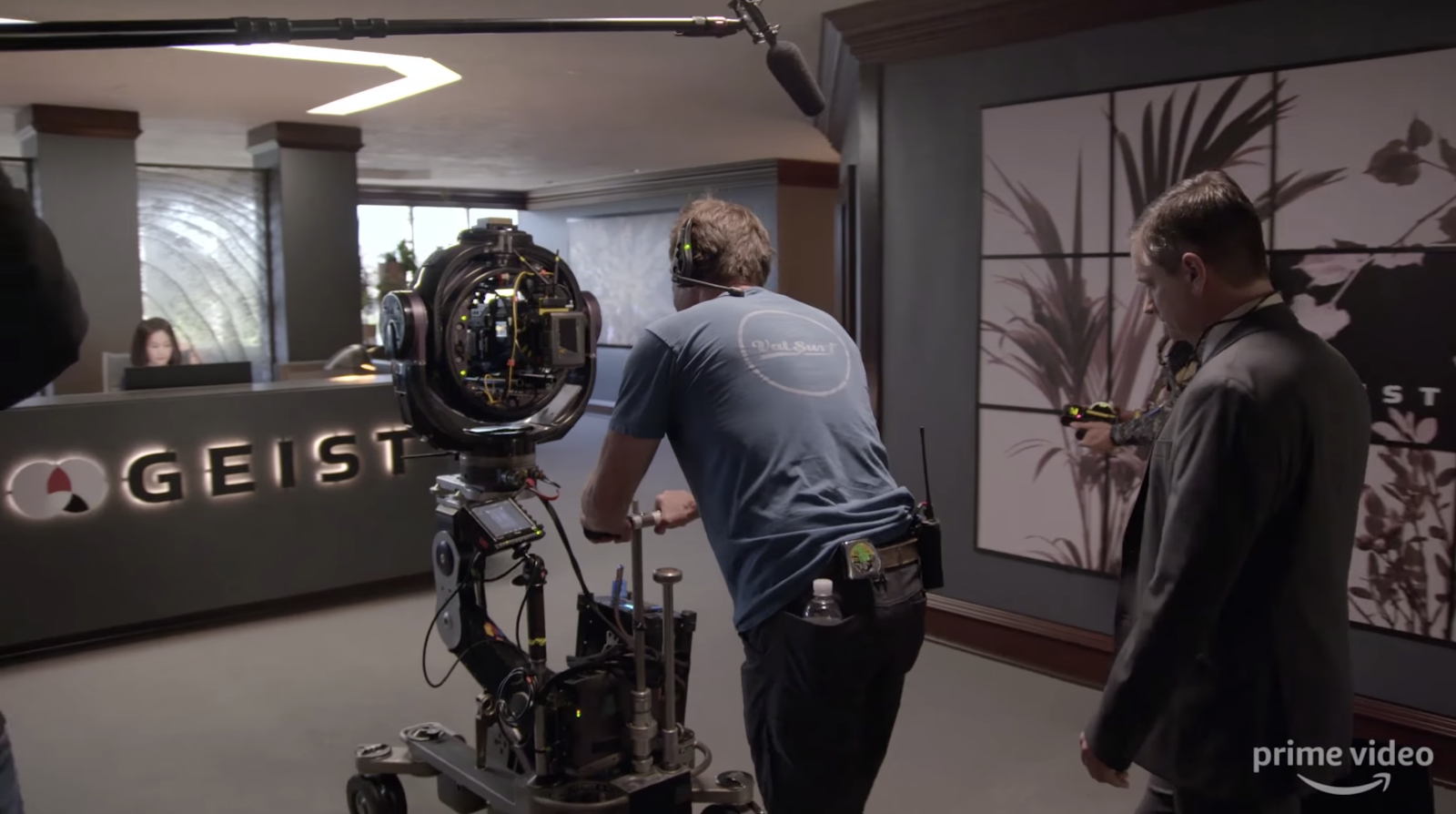
The cutting room set ups were made up of two computer monitors in front of the editors, a client monitor to the right, and a wall-mounted TV above for directors and producers to see cuts. Because sound is incredibly important to Sam Esmail (more on that later), sound designer Kevin Buchholz also came in to properly balance the room for optimum audio quality.
Within that arrangement, Tan, Krohn, and Peterson had their individual preferences too. For example, Krohn likes his monitors to be 27” but watches initial cuts on the couch, looking at the TV. “This gets me away from my desk and Avid and watching the scene just as an audience member,” he says.
Peterson likes using older Pioneer or Panasonic plasma with their deep blacks, and because they have less issues with motion stutter and banding. He’ll also have his monitors professionally calibrated, or will research how to do it himself. “I need to feel confident that the image I am showing is as close as possible to what the DP intended,” he explains.
Managing the crossboarding
When the editing room is ready to go, work can begin. With Homecoming, the bin and dailies process was by Esmail’s atypical approach to TV production. Instead of shooting episode by episode, he crossboards whole seasons as if shooting a movie. Everything is shot at once, as determined by location or actor availability. He does it for both logistical reasons, and creative oversight. “I think for him it helps him to feel like this is the most cost-effective way to shoot at location, shoot our actors, and also to provide himself with this sort of sense of ultimate control,” Peterson explains.
The result was sometimes a unique challenge for the editors, because they were never working with a fully-finished episode until the end of production. So, they would have to work with whatever materials were coming, and adjust their work-in-progress episodes accordingly. “The second you get that [new] scene, will it change the whole episode’s shape? Will it make you feel suddenly that the pacing feels off? And how much are we having to rework other elements in the episode prior?” Peterson says, summarizing some of the considerations they had to factor into their constantly updating episode work.
However, the process had benefits the editors appreciated. Notably, they would have more time with the materials they did have. So, they were able to sit with footage longer, tinker with it, and perfect it, all with considerably less stress and pressure.
Organizing the dailies
Daily footage coming in that covers multiple episodes requires good organization. The editors each have their own methods. “I like things categorized, clearly labeled and dated,” says Tan. “There’s never an unnamed bin, file or sequence.” Peterson likes stripped down bin organization. “All material shot for a scene is present along with wild lines and placed into one long sequence. This is often referred to as a KEM roll,” he says.
Krohn gives each scene its own bin. He explained to us exactly what that looks like. “If there’s a large amount of setups that were shot for a particular scene, I’ll make multiple scene bins, naming them, for example, Sc. 7pt1, Sc. 7pt2, etc. I’ll then determine which setups were used for each part of the scene and organize which setups go into which bin from there.
“For example, if the 7A, 7B, and 7E setups are covering the first part of the scene, they will go into the Sc. 7pt1 bin. This helps me to mentally breakdown the scene & never feel overwhelmed if there’s a large amount of footage shot for a scene or sequence.”
He adds, “I have the bin set to thumbnail view and then each camera setup will have its own row. With group clips (when they’re shooting an A&B camera), I’ll have the A&B camera have it’s own row, with the group clip in the row below underneath, typically under the A cam. Then I have my assistant editor choose the best frame that represents the setup & poster frame it, so that when I open up a dailies bin I have a quick visual representation of how the scene is covered.”
Making selects and starting the cut
When it comes to actually watching the daily footage, Peterson likes to be comprehensive. “How I view dailies [is] I always make sure to include every frame shot in case there is anything that can prove useful even if that wasn’t it’s intended purpose,” he says. “I look at every frame, everything before they say action, everything after they say cut, every piece I can think of.” Tan also watches everything, making sure to take her time as she does.
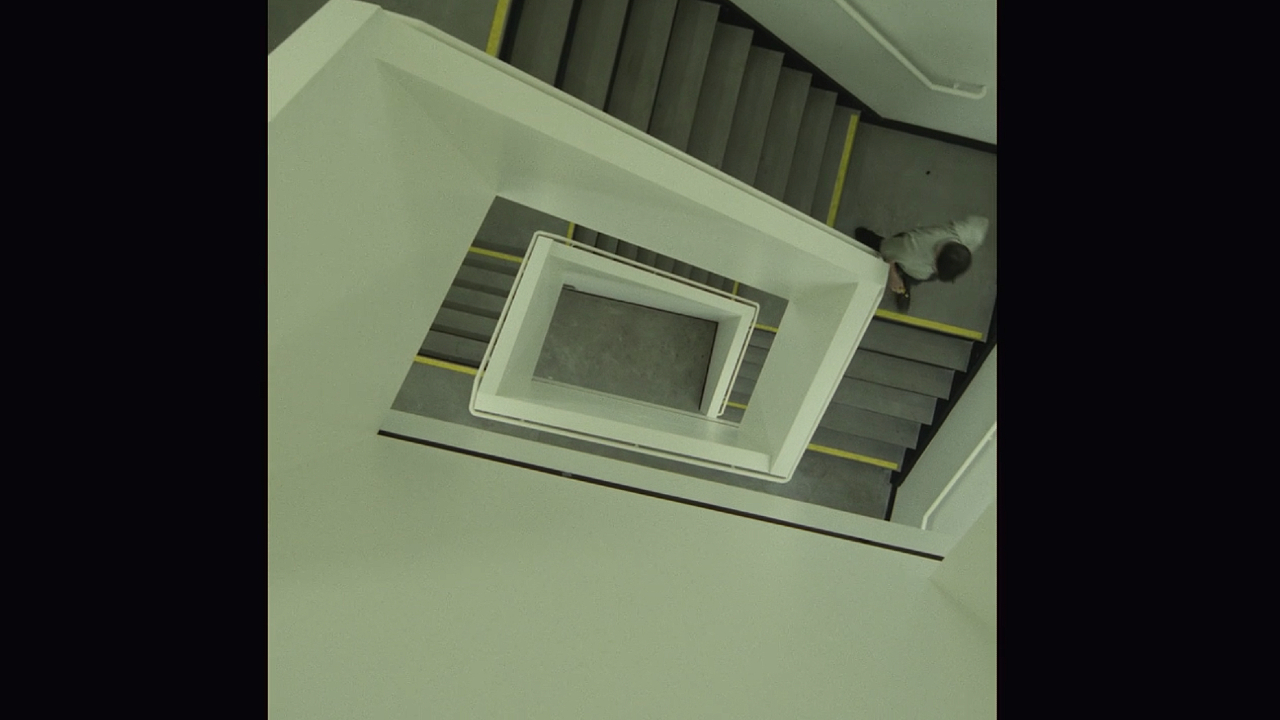
Krohn prefers to start by watching the last take of every setup. “I just want to get a visual idea of what the scene is, how to construct it, and my first impression. Then I will just start going through all the takes [to decide] ‘Okay I want to start here,’” he says.
As for how they make their selects and start cutting, Peterson does a lot of marking. “I basically create a select reel that has just locators out the ass.” He makes those selects based on a lesson he learned from editor Robert C. Jones at USC: you only get to see dailies once, so trust how you initially react to the material. “I basically go by my first response to the material,” Peterson says, and notes that he’ll write down his thoughts as he goes. “As I keep watching take after take, I start to sculpt in my head like, ‘Okay this is how I’m going to put it together.’”
Tan does something similar. “Once I have a blueprint down of how I want to cut the scene, then I go back, and I go back,” she says. She can be hard on herself doing that process. “My assistant will usually see my comments to myself in the bins and say ‘Oh my gosh it’s so negative,’” she says. “I’ll write, ‘Rough, terrible, rough, horrible.’ But then slowly I’ll go over it and start removing that ‘terrible.’”
Peterson likes to preserve many options for himself as he goes along. “I build a particularly complicated timeline full of layers on layers on layers, where I know this take is my first choice, this is my second choice take, or I have alt versions of things I can sometimes embed in my own timeline,” says Peterson. He does that, in part, to give Esmail options. “If he starts to question something I can say, ‘I’ve got an alt for you right now.’”
Krohn likes to dive in as quickly as possible. “I want to get through it and get it on its feet so I can see what the scene is,” he says. “I’ll get through my first cut, and then I’ll usually move on to another scene. I’ll move on and try to do something else really quickly and just get a break from it and come back and look at it later in the day or first thing in the morning. Because I just want to get away from all the challenges you get in your head about. I probably will typically work a scene three or four times before I would consider it my cut, where I want to show it.”
The collaboration process
Throughout their work on Homecoming, the editors collaborated closely with their assistants, Zachary Dehm (Tan’s assistant), Matthew Barton (Peterson’s assistant), and Chris Guiral (Krohn’s assistant). While the assistants provide the lead editors with organization and technical details, the lead editors also like to provide their assistants with something: being involved in the creative process.
“I think it’s really important to try to get your assistants to cut as much as possible,” says Krohn. “There’s a responsibility on editors to mentor their assistants and help encourage them as much as possible to cut, and to learn about the creative process – not just the technical stuff.”
For Krohn, that meant letting Guiral co-edit the fifth episode with him. Peterson likes to sit down and watch a constructed episode with Barton and talk about it. “I want his opinion. Not just on an episode level, but on a scene level. I’ll say, ‘Do you get this? How does this feel to you? Is this working?’”

They both believe that level of involvement goes a long way. “It keeps them really engaged creatively in the project,” Krohn says. “The more you can get your assistant editor doing that, there’s more of an investment in the project, and there’s just a better team atmosphere. Everyone feels like they have skin in the game.”
The collaborator with the most skin in the game is Sam Esmail, of course. The way the editors work with him is that Esmail gets shown selected scenes and sequences during production and provides feedback. “He wants to see things every week or every two weeks,” Tan says. (Note: some imagery used in this video could be slightly spoilery.)
In between, he largely trusts his editors add their initiative in the early stages. “There’s no, ‘I want you to do this.’ Nothing like that. He wants to see what we come up with and then when he sees it, he’ll react to it. And then he’ll give us his notes,” says Tan.
Before showing Esmail anything, however, one essential element has to be in place.
Sound & music from top to bottom
“His fixation on sound is so important. It’s something where my assistant was very aware that we’re starting to sound design right away,” says Peterson. “He sits in once I’ve had a chance to do a full editor’s cut with complete sound design.” Says Krohn, “If things are off, there’s maybe a stray sound that shouldn’t be there that got in, or maybe it’s a glitch, it really throws him off.”
The sound design process was meticulous. “I’d worked with Sam before, but I had not got to this level of sort of care with the sound design that we did,” Peterson says. “We never had fewer than 24 tracks.”
He has a reasoning for that. “He wants to feel when he watches the first cut, he’s watching it as an audience member,” says Krohn. Tan adds, “It’s like you’re almost watching a final product.”
Take, for example, the many phone call split screens in the show. “He wanted it sound designed from top to bottom, on both sides. Then he wanted everything to sound as if it’s coming through a phone. Then he wants to decide which elements pop. It’s like you’re basically building from scratch, everything as if you were ready to go to… sort of put it on a sound page right away,” Peterson says.

It wasn’t just sound design either. “Working for Sam, we’re music editors as well,” says Tan. Homecoming was unique in that there was no composer. Instead, it used pre-existing scores. The editors were often left to seek out good music selections on their own. We basically we had to find albums, and what we want to try, and then once we presented the scene, Sam would tell us right away,” Tan says. “We have to find the right score for the mood and it has to hit all these beats. It was tough to find a sound and tone for the right scenes.” (The opening scene from episode 1 uses the score from Brian DePalma’s “Dressed to Kill,” music composed by Pino Donaggio).
Quite often filmmakers will use scores from past films to use as a filler or inspiration for the film’s own original score. But as Esmail shared with Vulture in the above-referenced video, he didn’t want to ask a composer to ape some other composer’s work. So he made the creative decision to just go ahead and use the music from past films that he liked.

But that comes with its own challenges. Tan continues. “We would show each other things, and then say ‘Oh my gosh, that was great.’ And then find out we couldn’t clear it,” Tan says. Or they would have to consider the budget. “Then there’s also the budget. Because to use all these scores, you have to pay the AFM fee. We’d send it back to the music supervisor and her team, and then she would send it back and say, ‘You can only use two minutes and 35 seconds of this, you can’t go over it, because then it’ll hit the next tier.’”
But all their efforts were worth it. The work of editors is always a central component of any show’s success, but with Homecoming so much of what makes it unique – its split screens, its aspect ratio changes, its “score,” its telephone conversations – has the visible fingerprints of its editors on it. Which means watching one of the best TV shows of the year, you can’t help but think: “This is one of the best-edited TV shows of the year.”


